
14 minute read
Miroslav Pristavka, Plamen Kangalov, Pavol Findura, Mitko Nikolov, Krzysztof Kapela
from Agricultural, Forest and Transport Machinery and Technologies (ISSN: 2367– 5888) vol VIII, 2021
by kangalov
Application of Lean Methods in Prototype Production
Miroslav Pristavka, Plamen Kangalov, Pavol Findura, Mitko Nikolov, Krzysztof Kapela
Advertisement
Abstract: The paper focuses on solving the problem of wastage of materials in the assembly workplace in the form of searching, waiting, transporting and other unproductive activities. It offers a review and description of the theoretical knowledge on the current state of the problem addressed in the field of lean manufacturing, which is used in the practical part to solve the problems in the organization. Appropriate solutions to problems in the workplace are introduced. The prerequisite for the introduction of Lean methods is a positive impact on the significant indicators of the organization and on its performance in the long term. As a result of the introduction of Lean, a positive impact on the key indicators of the organisation is achieved. Keywords: 7S method, lean manufacturing, assembly,
INTRODUCTION
Organisations are trying to apply or look for ways to put into practice successful elements of lean manufacturing. In any organisation, not just a manufacturing organisation, a large volume of items and documentation will build up over time. The 7S method is the introduction of a clear, clean and safe workplace with the aim of maintaining this state using the standards created.
Directly transferring and copying practices from car companies may not work. On the contrary, transferring principles with an effort to adapt them is the right way to reap the benefits of lean manufacturing. (Kiran, 2019)
Observation of the workplace and communication with staff revealed visible deficiencies.
The results are incorporated and evaluated using lean manufacturing tools and methods. Design of warehouse division due to the need to shorten the material flow, challenging and constant overflow flow in the original warehouse. Efficient tool storage in the form of new toolboxes and a dispensing cabinet to eliminate time loss during working hours. (Burieta, 2013)
Nowadays, wasting time and money causes organizations to lose position and make them unsuccessful in the competition for customers. Customers are placing increasing emphasis on speed, quality, low cost, while emerging methods and technologies are growing in importance. (Košturiak et al., 2006) The aim was to analyse the processes in the assembly workplace and to select the appropriate lean manufacturing methods with a view to eliminating waste. The introduction of lean manufacturing methods is intended to reduce tool searching during work activities and thus avoid unnecessary shifts on the workplace.
MATERIALS AND METHODS
The observational method was used to analyse the workplace with the intention of creating an overview of the current situation and an overview of the problems occurring in the workplace. This was carried out at the assembly and warehouse sites. A simple hierarchical organisational structure is created to record the importance of roles, which operates through top-down communication.
Optimization of the 7S method
The first step was followed by an important optimization of the neglected 5S method, which we extended with two additional steps. After increasing the mentioned two steps which are safety and environment, we further referred the method as 7S. The optimization at the beginning included familiarization with the method and the formation of the work team. Optimizing the method and making it work efficiently in the workplace also consisted of discussing it with individual workers and keeping their mindsets on the correctness of the
steps. In Fig. 1, the sequence of steps for optimizing the 7S method is created using a flow chart.
Fig. 1 Procedure for implementing the 7S method
RESULTS
On the assembly floor, he is constantly working on assembling assemblies and subassemblies. Subsequently individual assemblies are completed, tested and, if necessary, adjusted according to the customer's needs. Quite a large part of the aforementioned assemblies comes from the parent company based abroad. This workplace also deals with the assembly of complete single purpose machines. Also, individual machine components are tested here and adjusted to the required parameters. Tests are carried out for the safety and correct operation of the machine. Critical points are analysed and solutions are proposed.
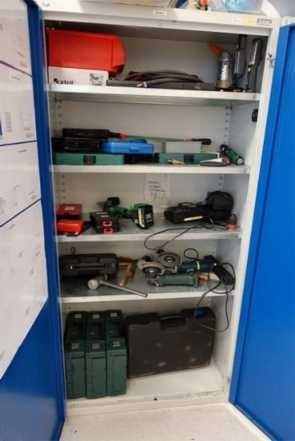
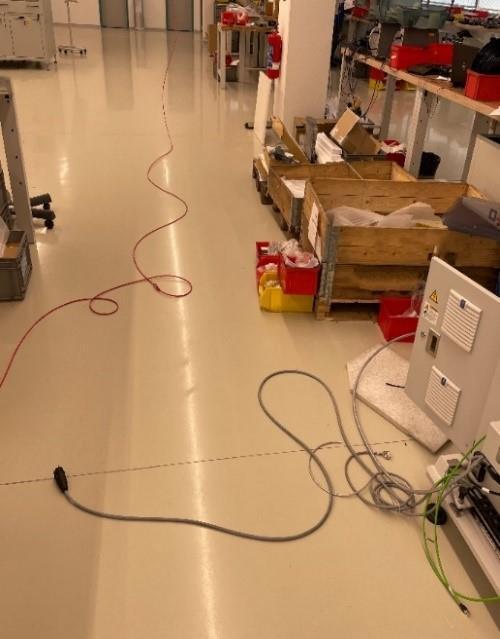
Fig. 2 Tools for assembly Fig. 3 Space between workbench and machine
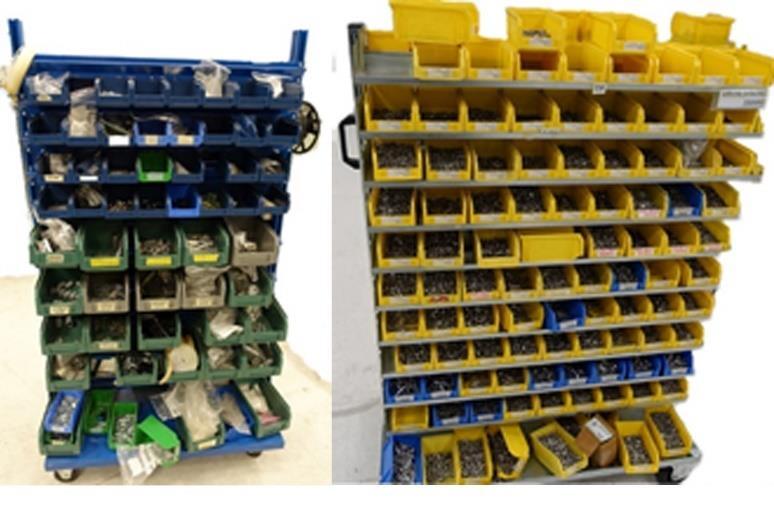
Fig. 4 Small material trolleys
The workstation also includes material trays with double-sided design, moving on wheels. Plastic boxes for small material are inserted in the racks, marked with a label for clarity of the stored material. In Fig. 4 we can see what such a trolley can look like with prolonged neglect, and we'll summarise in a few points what in the workplace can cause. This is what a cluttered material trolley can do: poor orientation in the workplace, increasing unproductive times, wastage in the workplace.
The goal is to achieve an efficient and lean workplace by implementing a 7S system with precise and clearly defined steps that will not arouse worker resistance and will not disrupt the production flow of the organization. Furthermore, it is necessary to acquaint all stakeholders with the basic ideas and guiding principles of the 7S, to present the planned status and, most importantly, to convince the employees of the correctness of the planned actions. It is necessary to make every single employee take the 7S method as a tool to increase performance and reduce the workload. The reason for implementing the method in the assembly workplace was the data showing the least compliant waste factor compared to other workplaces. Based on the organisation's requirement, we decided that the implementation of the method would be carried out at the assembly workplace. (Tóth, 2021)
Sort
Workplace sorting is used to appropriately separate items necessary for the job from unwanted items. First and foremost, we focus on tools, their quantity and condition. Once this data was obtained, the organization and subsequent sorting of unneeded tools and other unwanted items found on the job site began (Fig. 5).

Fig. 5 Example of sorted tools
Next, the team addressed the removal of obstacles placed at locations that workers walk over and have to navigate around. And last but not least is the warehouse where unneeded items are taking up potential storage space. All of the discarded but still usable items have been moved to the old warehouse in the building next door so that they continue to take up space on the site.
Systematize
Systematization of resources and materials follows as the next step after sorting. The goal is to organize and label all equipment and tools so that they are easily visible and we minimize unnecessary staff movement and waste. The workplace will be arranged in accordance with the requirement of the workers working in that workplace (Fig. 6). Only those items that are necessary for the production of the product itself, i.e. add value to the product, will be present on the workstation. For cabinets and objects that contain various tools, jigs, etc., an inventory index will be created, which is actually a list of items in that object. For each item, the number in which it will be located in that location is determined for a better overview.
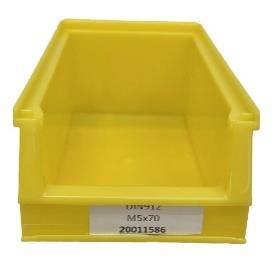
Fig. 6 Example of marking a small material box
Clean
In the cleaning step we focus on removing dirt such as dust, grime and all other unnecessary items because one of the conditions for efficient work is to have clean surroundings. During the implementation of the method, a large area cleaning was carried out. The cleaning of assembly tables and their surroundings, where the movement and work activities of the workers are most represented, was mainly undertaken. The assembly procedure states that the worker must clean the work area conscientiously before starting work. Also, before the end of the shift, set aside a short time to restore the work area to its original condition by removing clutter. This will be done by a simple documentary guide showing the area as it should look. The organisation has two staff members who look after the cleanliness of the floor and the less frequented areas in the building.
Containers for different types of waste are located at the workplace, they are placed near the workplace with the highest waste production, i.e. assembly. Their removal is taken care of on a daily basis by an authorised employee of the organisation.
Standardize
The constant repetition of the previous steps will ensure order for a time, but standardizing them will ensure their constant adherence and prevent the deterioration of the time-acquired state of the method's implementation (Fig. 7). Standards will be established for all changes relating to the previous steps as well.
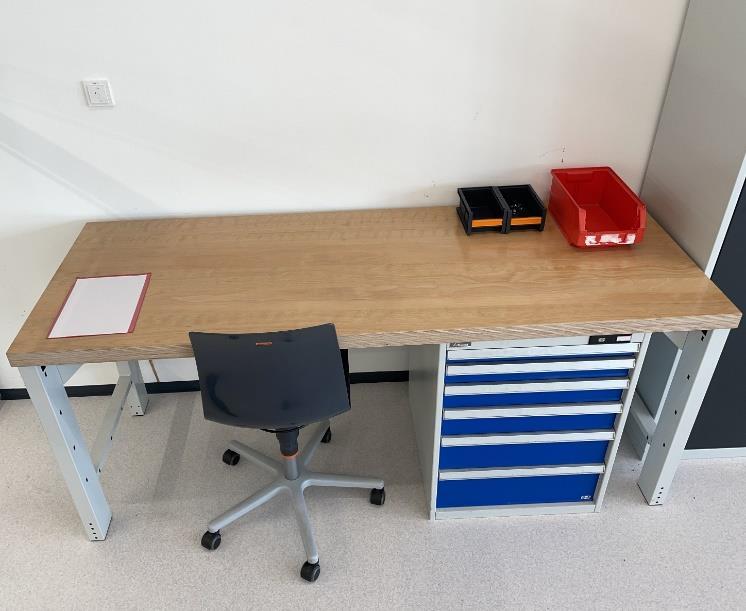
Fig. 7 Assembly table standard
Keep
When it comes to maintenance, it will be up to the assembly workers to be disciplined in meeting the established standards for efficient, waste-free operation of the workplace. We know from our own experience that following standardized and specified procedures is sometimes very burdensome for workers, so we propose to introduce incentive rewards for adherence to the written standards. The monitoring and promotion of the established standards would be carried out in the form of departmental meetings, organised by the head of the department, in which the workers themselves could also contribute with their comments and corrections. In this way, an endless cycle of discipline would be created, which would contribute to the positive effect of the growth of the department. A board will be created to be placed in the assembly area of the workstation, which will contain all the norms, procedures and standards for the implementation of the 7S method. It is recommended that periodic audits be conducted to show progress compared to past status. (Tóth, 2021)
Security
The organisation is obliged to continuously address issues regarding safety at work. Safety at work means making the workplace excessively safe. The previous steps of the 7S method also contribute to safety, such as the marking of premises, which helps to prevent accidents caused by moving objects or to reduce the severity of accidents due to the late availability of emergency equipment. The sixth step of the method seeks to achieve zero injuries in the workplace.
In order to achieve good safety results, it is necessary to comply with all the principles of safety at work such as the use of personal protective equipment, proper use of tools and tools without damage. Contribute not only to the visual effect of the workplace, but also in terms of safety. Therefore, a standard of workwear for the assembly worker has been created, prominently displayed on the standards board created.
Environment
The definition of a successful organisation includes environmental performance. Environmental issues are now being decoupled from social aspects and are making themselves known, particularly due to the increasing trend towards environmental protection (Fig. 8). The role of the organisation is to encourage all employees to recycle by informing them and providing them with the necessary equipment to enable them to do so.
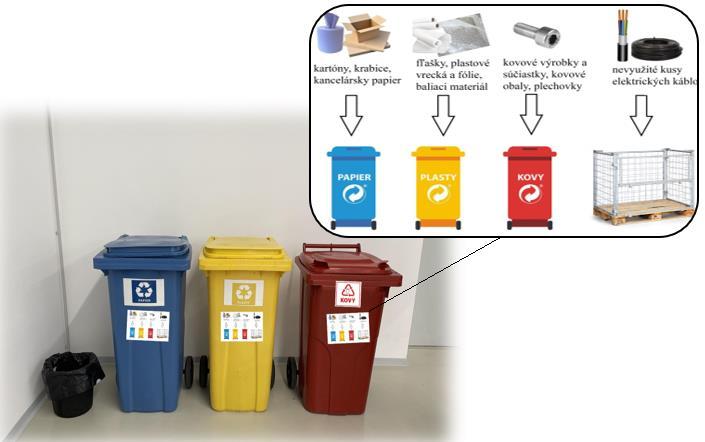
Fig. 8 Recycling bins with recycling principles
There will be collection bins at the workplace adjacent to each desk and also shared collection bins. This includes recycling signage, clearly marked bins and communication of recycling policies.
CONCLUSION
Many organizations are striving to implement lean manufacturing principles and develop their own concept of tools, techniques and methods. Some organizations use the same method under a different name, but it is more important to use lean manufacturing tools and methods correctly to eliminate the basic types of waste in the workplace than it is to name them correctly and appropriately.
The analysis of the assembly and warehouse department highlights weaknesses that undermine the proper functioning of the organisation. Several types of waste were found. Pallets of material are often stored in the space between the workbench and the machine with the intention of being used and the space cleared as soon as possible. Realistically, however, the planned application and disposal of the material space drags on for several months. On site, the frequently used small material trolleys, which do not have a docking system and the original labelling of the boxes is confusing, create unproductive times with long searches for material.
When working with established tool trolleys, the arrangement of the tools in the drawers breaks down over time. Such cluttered drawers prolong the work execution time by delays.
According to the established procedure, the 7S method was optimized step by step. In the optimization process, we involved the organization's workers without disrupting the production and assured them of the correctness of the steps of the 7S method. Conditions were created where they themselves could come up with their own ideas on what and where improvements could be made. Corrective action was taken on the problems spotted by the workplace analysis. Standards have been created to ensure that the optimised steps of the 7S method are followed at all times. Such a workplace helps to be competitive in today's battle for customers.
When using one warehouse with several off-site storage facilities, the length of material flow was equal to 163 meters. In practice, in order to shorten the material flow, we were able to reduce the length of the material flow by 35 metres after the introduction of the warehouse partitioning design, which amounts to a reduction of more than 20%. An important factor was the elimination of the warehouse spaces located freely in the workplace and the subsequent creation of a warehouse on the assembly floor.
By investing in more modern equipment, we will keep staff movements to a minimum. There have been noticeable shifts in the efficiency of tool storage using new foam-lined tool trolleys to save time during working hours. On average, the new tool trolleys show an improvement of 7% compared to the original condition.
The work was carried out in a manufacturing organisation environment, so each proposal and its implementation had to be carefully considered and then acted upon. In practice, there may be a number of unexpected factors that have not been taken into account and may interfere with the production process.
ACKNOWLEDGEMENT
This paper was created with financial support of the grant project VEGA no. 1/0102/21 - Reducing chemical loads and degradation of agricultural and forestry soils by selecting appropriate agri-technology with regard to climate change.
This paper was created with financial support of the grant project KEGA no. 016SPU4/2021 - Implementation of modern educational approaches and tools to enhance creativity and practical skills of graduates with special focus on agricultural and forestry science using.
REFERENCE
[1] Burieta, J., et al., (2013). The 5S method. IPA Slovakia, s.r.o. Žilina. 54s. ISBN 978-808966704-8 [2] Gulati, R., (2009). Maintenance and Reliability Best Practices. Industrial Press Inc. U.S. 2012. 400s. ISBN 978-1-61344-572-3 [3] Kerkovsky, M., Valsa, O., (2012). Modern approaches to production management. 3rd ed. Prague: C.H.Beck, 2012. 176s. ISBN 978-80-7179-319-9 [4] Kiran, D., (2019). Production Planning and Control - A Comprehensive Approach.
Elsevier, 2019. 582 p. ISBN: 978-0-12-818364-9 [5] Košturiak, J., et al., (2006). Lean and Innovative Enterprise. 1. 1st ed. Prague: Alfa
Publishing, 2006. 240s. ISBN 80-86851-38-9 [6] Monden, Y., Taiichi, O., (2012). Toyota Production System: An Integrated Approach to
Just-In-Time. 4. 6th ed. Taylor & Francis Group, LLC. 501s. ISBN 978-1-4398-2097-1 [7] Munro, R., Maio, M., Nawaz, M. et al., (2009). The Certified Six Sigma Green Belt
Handbook. 1st Ed. Pearson. 437s. ISBN 978-1-62198-060-5 [8] Novotný, J., Suchánek, P., (2007). Doctrine of enterprise II. 1st ed. Brno: Masaryk
University Brno, 2007. 158s. ISBN 80-210-3333-9 [9] Sahoo, P. (2020). Handbook of Research on Developments and Trends in Industrial and
Materials Engineering. IGI Global. 524 p. ISBN 978-1-5231-2901-0 [10]Shanker, K., Shankar, R., Sindhwani, R., (2019). Advances in Industrial and Production
Engineering. Springer Nature Singapore Pte Ltd. 854s. ISBN 978-981-13-6412-9 [11]Tóth, M., (2021). Application of Lean technique in piece and prototype production. [Diploma thesis], Nitra, 2021. [12]Westcott, R., (2014). Certified Manager of Quality/Organizational Excellence Handbook. 4. 2nd ed. American Society for Quality (ASQ). 688 p. ISBN 978-1-62870-341-2
CONTACTS
Miroslav Prístavka, Institute of Design and Engineering Technologies, Faculty of Engineering, Slovak University of Agriculture in Nitra, Tr. A. Hlinku 2, 949 76 Nitra, Slovakia, e-mail: miroslav.pristavka@uniag.sk
Plamen Kangalov, Department of Repair, Reliability, Mechanisms, Machines, Logistics and Chemical Technologies, Agrarian and Industrial Faculty, University of Ruse, 8, Studentska Str., 7017 Ruse, Bulgaria, e-mail: kangalov@uni-ruse.bg
Pavol Findura, Institute of Agricultural Engineering, Transport and Bioenergetics, Faculty of Engineering, Slovak University of Agriculture in Nitra, Tr. A. Hlinku 2, 949 76 Nitra, Slovakia, e-mail: pavol.findura@uniag.sk
Mitko Nikolov, Department of Repair, Reliability, Mechanisms, Machines, Logistics and Chemical Technologies, Agrarian and Industrial Faculty, University of Ruse, 8, Studentska Str., 7017 Ruse, Bulgaria, e-mail: mnikolov@uni-ruse.bg
Krzysztof Kapela, Siedlce University of Natural Sciences and Humanities, Stanisława Konarskiego 2, 08-110 Siedlce, Poland





